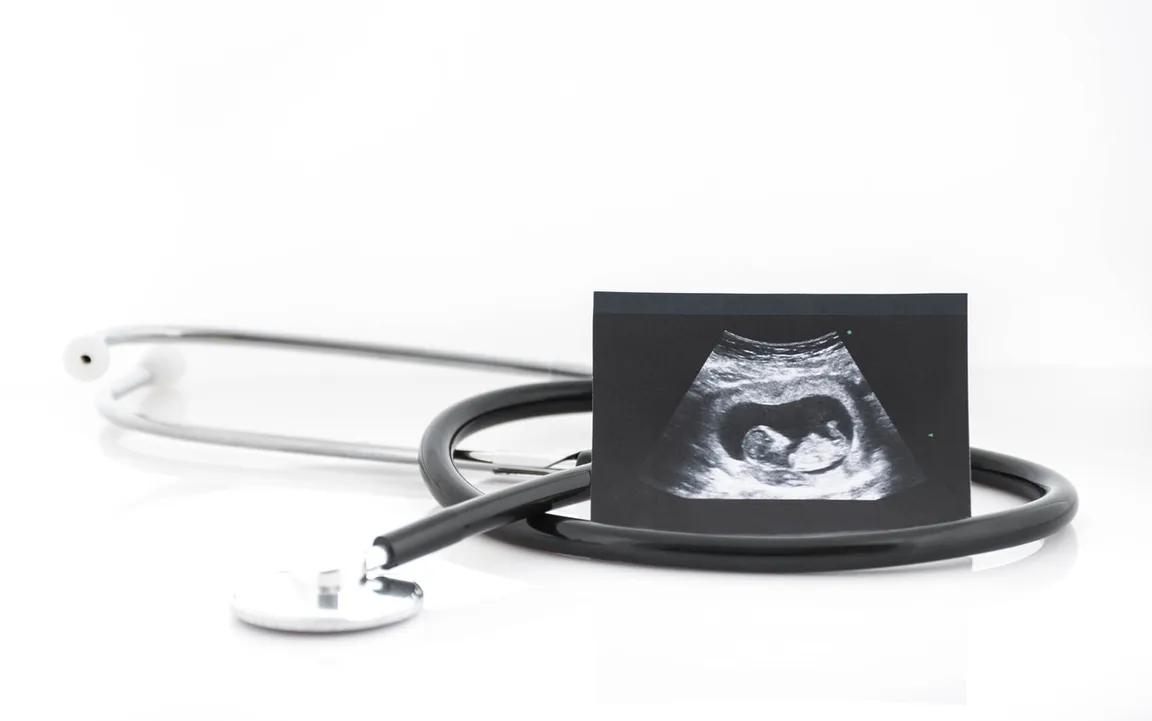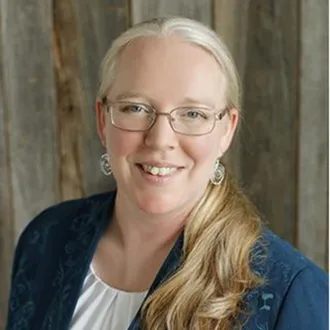4 Ways Palliative Care Can Move Forward in the Post-Dobbs Era

Since the U.S. Supreme Court decision in Dobbs vs. Jackson in 2022, many states have enacted legislation that limits or bans abortion, often without exceptions for fetal anomalies. So far, fourteen states have made abortion illegal, and many others have significant restrictions. Maternal health is an exception in most states, but the language is often confusing and fails to define when the pregnant person’s life is sufficiently threatened to allow the termination to proceed. Court cases continue to be heard related to the rights of the pregnant person to obtain life-saving treatment. Physicians fear retribution or prosecution in many states, and in some states, physicians face criminal penalties for even discussing the option of termination with their patients.
"The new laws impact the physician-patient relationship and the core tenets of palliative care."
Palliative care, as the comprehensive, interdisciplinary care of patients and families with serious illness, is fundamentally affected by these restrictions. The new laws impact the physician-patient relationship and the core tenets of palliative care, which seek to support patient autonomy, understand patient and family values, and help families who wish to provide comfort and dignity to the seriously ill.
Perinatal palliative care is a unique type of palliative care that cares for pregnant persons and their families when faced with life-limiting fetal conditions such as congenital/genetic syndromes or serious maternal complications. While perinatal palliative care is most directly impacted, the ruling has implications for the entire field of palliative care.
"While perinatal palliative care is most directly impacted, the ruling has implications for the entire field of palliative care."
The American Academy of Hospice and Palliative Medicine (AAHPM), the Center to Advance Palliative Care (CAPC), and the National Coalition for Hospice and Palliative Care, put out statements after the Dobbs ruling (click the white arrows below to expand and read the statements). Numerous other health care organizations also issued statements.
American Academy of Hospice and Palliative Medicine (AAHPM) Statement
“The American Academy of Hospice and Palliative Medicine (AAHPM) opposes the decision of the U.S. Supreme Court in Dobbs v. Jackson enabling the enforcement of some individual state laws that interfere with the patient-physician relationship, are inconsistent with evidence-base medical practice, reduce access to health care, and put the lives of pregnant people at risk. This decision disproportionately impacts those who already face inequities in health care access and outcomes. We are particularly concerned that such laws will harm families in need of perinatal palliative or hospice care and our members who serve them.
AAHPM has always been committed to promoting high quality, person-centered, equitable, and evidence-based care. We will continue to monitor the evolving legal landscape and address the educational needs of our members. We remain resolute advocates for policies that improve the lives of people with serious illness and support the health professionals who care for them.” - AAHPM, June 29, 2022
Center to Advance Palliative Care (CAPC) Statement
“One of the most significant health care issues of our time, the overturning of Roe v. Wade limits access to maternal health care and exacerbates health disparities for millions of people–including the people with serious illness we serve in palliative care.
Restrictive state laws can now interfere in the patient-physician relationship and override important medical decisions that should be made by patients in consultation with their clinicians. Historically and economically marginalized and disadvantaged populations will have even more limited access to our health care system.
Dedicated to increasing access to quality health care, CAPC stands in support for people to receive the patient-centered, evidence-based health care they need. Nothing less is acceptable.” - CAPC, June 26, 2022
National Coalition for Hospice and Palliative Care Statement
"Last week, the Supreme Court eliminated guaranteed access to medical care for millions of people, including some patients living with serious illness.
The adverse impact on access to healthcare cannot be overstated. The Coalition strongly believes health care decisions should be made between patients and their healthcare providers. Historically disadvantaged and marginalized people will have even less access to high quality healthcare then they do now due to the restrictive state laws going into effect.
The Supreme Court’s decision is contrary to important Coalition values: the rights of people to have equitable access to person centered care, privacy, autonomy, and personal decision-making. These are fundamental elements, as a Coalition and as a field, that we hold dear. The Coalition joins with other health care organizations to oppose government intrusion into medicine and healthcare that impedes access to safe, evidence-based health care services. Our Coalition will always look to strengthen health care policies that help people with serious illness and support all health professionals who care for them.” - National Coalition for Hospice and Palliative Care, June 29, 2022
Key Scenarios in Which Abortion Restrictions Impact Medical Care
Abortion restrictions impact the medical care of both infants and pregnant persons in many ways, particularly those who are seriously ill, as illustrated in the examples below.
1. Infant with life-limiting condition
In a well-publicized Washington Post story, a family in Florida with a desired pregnancy was faced with the diagnosis of fetal bilateral renal agenesis, the absence of both kidneys, which leads to complications not just related to absent kidney function but also the failure of the fetal lungs to develop. This has been considered a uniformly lethal condition until recently when a few examples of infants who received experimental amniotic fluid infusions throughout the pregnancy were able to live long enough to get dialysis and, ultimately, a kidney transplant. However, a recent trial was terminated early due to high rates of preterm delivery. Long-term complications for these babies are high, and most infants ultimately die. The family featured in the Post would have chosen termination but were told that, because there are a few cases of babies surviving, the condition wasn’t lethal. They ultimately chose a comfort care or palliative care approach after birth and (in their words), “watched their baby die” of respiratory failure.
For context, a fetal anatomy scan is typically conducted around the 20th week of gestation. However, given the restrictions on pregnancy termination imposed at earlier gestational ages, families often are unaware of a fetal diagnosis until well after the legal limit for abortion.
Another clinical scenario that poses ethical challenges arises when the termination of one fetus in a multiple gestation is deemed necessary to avert adverse outcomes for the other fetus. For instance, in monochorionic twin gestations, where each twin shares a single placenta, fetal intervention procedures may be warranted to interrupt the struggling or abnormal fetus’s blood supply, termed ‘selective reduction,’ thereby safeguarding the surviving twin from neurological complications or death, stemming from shared blood circulation. Even when termination is permitted, this is a terribly difficult decision for a parent to make. When there is no choice at all, there is a significant risk that both babies may die.
In all these situations, the decision-making is exceptionally hard for the parents and the health care team alike. In the wake of the Dobbs decision, parents in some states have fewer or no decision-making options in these circumstances.
"In the wake of the Dobbs decision, parents in some states have fewer or no decision-making options in these circumstances."
2. Pregnant person’s life is endangered
Some pregnancy conditions pose a dire threat to pregnant peoples’ lives, such as previable rupture of membranes, a condition where the amniotic sac ruptures before fetal viability. In some pregnancy complications, continuing the pregnancy may lead to life-threatening infections such as chorioamnionitis or sepsis. Access to timely abortion care becomes crucial to prevent these complications and protect the pregnant person's health. Clinicians report being hesitant to declare whether a pregnant person is “sick enough” to allow abortion to save their life.
Another scenario is when a person with a serious illness (e.g., cancer or organ failure) must continue a pregnancy, even though it can pose a significant risk to them. Forced continuation of pregnancies that could exacerbate conditions can result in the deterioration of the pregnant person's health, leading to complications that may include organ damage, cardiovascular events, and death. Pregnant persons may feel compelled to travel farther distances, hindering timely access to care and potentially endangering maternal health.
"Forced continuation of pregnancies that could exacerbate conditions can result in the deterioration of the pregnant person's health, leading to complications that may include organ damage, cardiovascular events, and death."
While there are many more scenarios to consider, the last that will be covered in this blog is when a pregnant person from a disadvantaged group cannot travel to receive abortion care, whereas a person of greater financial means is able to access care. The lack of access to abortion in many states falls neatly across socioeconomic lines and exacerbates already well-defined disparities in care.
How Anti-Abortion Laws Impact the Field of Palliative Care
The previous scenarios covered how anti-abortion laws impact the medical field as a whole. Here are five ways these restrictions negatively affect the palliative care field, and the patients and families served.
1. Increased maternal morbidity and mortality
When a fetus’s life is prioritized over the pregnant person's life, there will inevitably be more cases of worse outcomes due to delays in care, resulting in increased suffering or dying from preventable conditions. While it’s difficult to track risk in pregnancy deaths under abortion bans, a University of Colorado Boulder study estimates that pregnancy-related mortality would increase by 24% under an abortion ban, with even higher rates for Black people.
2. More infants born with serious, life-limiting and medically complex conditions
If all the babies with life-limiting fetal diagnoses conceived in states with significant abortion restrictions were brought to term, there could be as many as 82,000 infants with serious and complex medical complications entering the health care system each year (estimate based on the rate of life-limiting fetal diagnosis [2%]* in the people of childbearing age in the states with strict abortion bans).
These infants often require complex medical technology such as G-tubes, tracheostomies, and ventilators. Care for these medically complex infants will result in a substantial increase in the need for hospital beds, long-term care beds, and home nursing care, posing a major financial and staffing burden to the already stretched medical system. In many regions, access to pediatric hospice providers is severely limited, often with only a singular resource available across expansive geographic areas.
With the ripple effects of abortion bans, there has been no attempt by the United States government to increase funding or support, even though our health care system is unequipped to meet the needs of all of these medically complex babies.
3. Potential slippery slope of enforced life-sustaining treatment
Palliative care and ethics specialists are concerned about the “slippery slope” with legal cases forcing the issue of life-prolongation over quality-of-life decisions. For example, if families are required by law to continue a pregnancy with a life-limiting condition, what would stop the enforcement to provide resuscitation after birth, rather than allowing parents to choose a comfort care/hospice approach? The recent “Born Alive” ballot initiative in Montana called for any baby being born alive to be resuscitated, regardless of prognosis or parent choice, or gestational age. This was overturned by the popular vote by a slim margin, but the potential persists for this type of legislation that massively curtails parental autonomy.
4. Complicated bereavement for families
When a family lacks the choice to follow their values-guided beliefs about what is best for themselves, their baby, and their family, it is logical that their grieving will be substantially impacted. Little has been published on this topic to guide palliative care and bereavement providers.
5. Concerns for provider’s own health and reproductive freedoms
When speaking to palliative care clinicians, many express not wanting to train or work in a state with abortion restrictions in case they themselves or their spouses are in medical danger and cannot terminate. This will amplify the existing lack of access to quality care providers from all specialties in states with abortion restrictions and disproportionally affect patients from disadvantaged backgrounds who cannot travel.
How Palliative Care Clinicians Can Move Forward
Though the anti-abortion laws are harmful for all of the reasons listed above, we must move forward. While these restrictions stand, we need to be able to work within these parameters and continue to provide care to our patients and their families. Here are some ways we can do so.
1. Nonjudgmentally explore hopes and fears, and help families plan
We should do what we usually do in palliative care: be present. When working with a patient and family faced with a situation they never wanted to be in (e.g., a cancer diagnosis, a sudden neurologic event, or a pregnancy with serious anomalies), we can still be present, witnessing and acknowledging their emotions, making sure they are not alone, and assuring them that we will care for them in any way that we can, no matter what.
"We should do what we usually do in palliative care: be present."
We can still use our core skills of reflective listening and exploring fears and hopes. For example, we can ask:
- “What is the hardest part about this?”
- “Now that we know the options are (or lack thereof), what is most important to you?”
- “Some families want to do things, like taking photos and making a memory box. I could imagine you may or may not want to do these things. What feels right to you?”
And, for those of us in perinatal palliative care, we can still work with families to create a birth plan and provide resources such as support group referrals and bereavement resources.
2. Call upon your interdisciplinary and interspecialty team
This is not a time to work alone. Instead, it’s the time to work with your community. Some hospital systems have established interdisciplinary and interspeciality committees comprising experts in maternal-fetal medicine, palliative care, neonatology, chaplaincy, ethics, and social work. Other specialties (neonatology, pediatric subspecialties, oncology, medicine, etc.) may be able to clarify the medical situation and prognosis for the pregnant person or fetus.
"This is not a time to work alone. Instead, it’s the time to work with your community."
Members of the committees may work with families directly and debrief with staff about their moral distress. They also offer guidance and assistance to the primary health care clinician tasked with caring for the patient during this challenging decision-making process. The committee should deliberate on all situations where termination of pregnancy is being considered due to potential risks to the pregnant person’s health to make a consensus recommendation on how to proceed. With this process, no single provider takes responsibility for the decision, and the ethical and legal teams have already contributed to the consensus.
3. Call to action
Palliative care clinicians can make a difference as thought leaders in a few ways. Through ongoing open discussions at our own institutions, presentations at our regional and national conferences, and writing and publishing on our experiences with the impacts of abortion bans, we can keep the open dialogue needed across the country. We can participate in our national organizations’ committees and support position statements. Most critically, we can use the powerful impact of storytelling to write to our legislators with our personal experiences, worries, and patients’ narratives to advocate for high-quality care for our patients.
"We can use the powerful impact of storytelling to write to our legislators with our personal experiences, worries, and patients’ narratives to advocate for high-quality care for our patients."
4. Need for research funding
There is very little published about the true impact of restrictions on abortion on patients, families, and care team members. Funding may be challenging to obtain due to legal restrictions, but it is imperative for the field that we strive to understand and mitigate the impacts.
Resources
It’s important that you receive the support you need if you find yourself in these situations. Your organization may have resources through your department or employee assistance program. Additionally, the Center to Advance Palliative Care (CAPC) has many resources on managing stress, moral injury, sadness, anger, distress, frustration, and more, with options for both members and non-members. See below for CAPC’s offerings:
- Well-being debriefings, confidential sessions hosted monthly by trained facilitators
- Well-being facilitator training, a manual that provides the necessary training individuals need to offer well-being debriefings at their organizations
- Emotional PPE, a toolkit that provides resources for clinicians and teams to support well-being.
Acknowledgements
I want to acknowledge the contributions of Dr. Paul Smith, a supportive palliative care specialist, and Dr. Paula Smith, a maternal-fetal medicine specialist, who contributed to the editing of the post. I also want to acknowledge the outstanding presentations at the Annual Assembly of Hospice and Palliative Medicine (March 2024) and the International Perinatal Bereavement Conference (May 2024). This thoughtful and thorough review of the issues influenced my thinking. I also thank CAPC for bringing this critical and timely topic to the forefront.
* About 3% of pregnancies have birth defects, but not all of them are life-threatening. This 2% statistic is an estimate based on the types of anomalies that make up the 3% in the mentioned article, with 2% being the more serious types of anomalies.

Be the first to read articles from the field (and beyond), access new resources, and register for upcoming events.
SubscribeEdited by Melissa Baron. Clinical review by Andrew Esch, MD, MBA.
